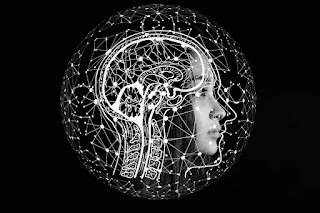Democrats are in control of most topics, but more Americans support Republicans on matters like immigration, crime, and the economy.
The public's list of the biggest issues facing the country includes drug addiction, gun violence, inflation, and the cost of health care.
The ability of the parties to cooperate is viewed as a problem by both Republicans and Democrats, notwithstanding partisan differences in judgments of many national issues.
However, the list of issues is almost as long as the number of problems pertaining to Republicans and Democrats cooperating. Out of the 16 problems that are covered, this is one of the few that lacks partisan division.
Republicans and independents leaning Republican continue to view inflation as their main concern, with 77% of them believing it to be a very serious issue. At least two-thirds of Republicans rank the fiscal imbalance, illegal immigration, and the status of moral values as their top issues.
Gun violence is the main worry among Democrats and Democrats leaning Democratic, with around
Compared to Republicans, Democrats are more than four times more likely (64% vs.14%) to believe that climate change is a major issue facing the nation. Democrats are also significantly more inclined to agree that race and gun violence are serious issues.
On the other hand, Republicans are more than twice as likely as Democrats (70% vs. 25%) to believe that illegal immigration is a serious issue. Additionally, they are around 30 percentage points more likely than Democrats to believe that the budget imbalance and the moral decline are serious issues.
Other conclusions drawn from the latest poll include:
Fewer Americans anticipate a reduction in the deficit in the upcoming years: In around five years, 70% predict it will be bigger than it is now; 18% predict it will be roughly the same size as it is now; and only 11% predict it will be smaller.
On economic policy, the Republican Party is ahead by 12 points: 42% of respondents agree with the GOP, while 30% agree with the Democratic Party. In terms of immigration and crime, the GOP is similarly ahead.
To view the most recent version of Biden's approval rating among subgroups, please refer to the full tables.
Regarding climate change policy, around four out of ten Americans (41%) say they agree with the Democratic Party, compared to much fewer (27%) who agree with the GOP, and nearly a third (31%) who say they agree with neither party.
When it comes to health care and abortion legislation, the Democrats have an identical edge (12 points each).
In terms of foreign policy, gun control, and education policy, neither party has a sizable advantage.
On immigration, the GOP leads by ten points, but this is a change from July of last year, when almost equal numbers of Americans said they agreed with the GOP and the Democrats (38% agree with the GOP and 37% agree with Democrats).
Inflation, the cost of health care, bipartisanship, drug use, and violence top the public's list of the nation's most pressing issues, according to this chart.
Eight of the 16 concerns on the survey, according to the majority of Americans, are "very big problems" that the nation is currently confronting. These cover a wide range of issues, including drug addiction, violent crime, and gun violence, as well as fiscal issues like inflation, health care costs, and the budget deficit.
Since May 2022, when 55% stated this, the percentage of people claiming health care affordability is a major problem has increased by 9 percentage points. The percentage of respondents who believe that violent crime and gun violence are serious issues has also climbed from the previous year, rising by 5 and 9 percentage points, respectively.
Figure indicates that more Americans strongly disagree with Biden than strongly agree with him.
Sixty-two percent of the public say they don't think Joe Biden is doing a good enough job as president, and forty-one percent of them strongly disagree. Merely 35% of respondents say they are satisfied with Biden's work performance, with only 17% strongly agreeing.
Half of White Americans (67%) who say they disapprove highly of Biden's work performance are among the two-thirds who say they dislike.
Majorities disagree with McCarthy and Schumer's methods of doing their jobs, according to the chart.
About two thirds of Democrats and independents with a Democratic leaning vote (65%) are satisfied with Biden's work performance, with a third strongly agreeing. Republicans and those leaning Republican are overwhelmingly against (92%); almost three-quarters (73%) strongly oppose.




















